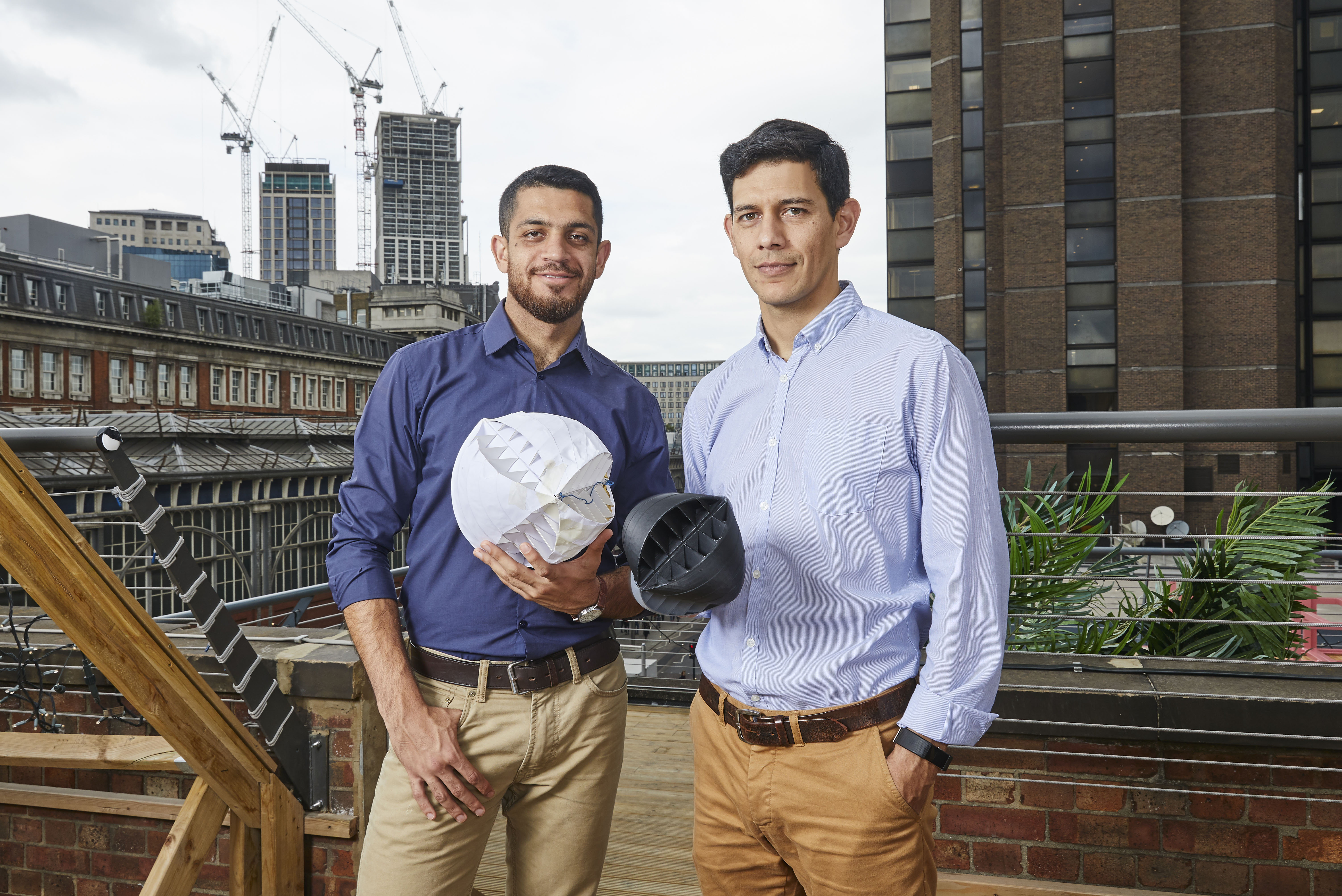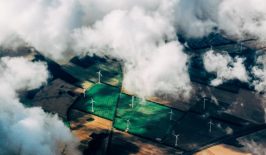The winner of the 2018 James Dyson Award is an innovative new wind turbine designed to harness wind power even in the inner city.
Designed by Lancaster University masters students Nicolas Orellana and Yaseen Noorani, the O-Wind Turbine has been crowned the winner of both the UK chapter, and the international 2018 James Dyson Award. It’s specifically designed to harness power from the gusty, chaotic, omnidirectional winds that blow through cities and consists of a turbine that spins like a ball on a single vertical axis. That’s very different to conventional wind turbines with giant blades that spin on a horizontal axis, and which are typically placed in wide open area, or offshore, to seek maximum wind velocities.
Vertical Axis Wind Turbines
While other wind turbines that spin on a single vertical axis do exist, including the Typhoon Turbine that we’ve covered before, vertical axis wind turbines (VAWTs) generally focus on spinning from winds blowing across the device, more or less on a horizontal plane. This can be useful in some areas where winds are inconsistent or where they can’t be placed high-enough due to public ordinances, but they tend to have low efficiency. There isn’t yet an established technology that is able to make use of the relatively chaotic wind of urban environments that blows from all directions.
The O-Wind Turbine prototype seems to be a step further forward than other VAWT designs. Focusing on a circular shape to make use of Bernoulli’s principle, the design has vents cut across the surface to allow winds from all directions to spin the sphere on its single vertical axis. The design actually came about after the inventors studied NASA’s idea for a Mars “Tumbleweed Rover” – a sort of rolling inflatable ball intended to careen over Mars’s surface to compare conditions in different geographical locations.
With Mars having a gravity of 38 per cent of Earth and just one per cent the atmospheric pressure, this is not a trivial problem. That study and testing of devices eventually gave rise to the O-Wind Turbine design:
“With an urban area where there’s loads of buildings and obstacles, the wind tends to blow in a very very chaotic manner,” said Norani. “We know wind turbines are generally available where there’s large, open spaces. Our invention is ideal for such an environment, where no matter where the wind comes from, the turbine will move on the same axis in the same direction.”
“It allows people living in apartments to generate their own electricity,” Gonzalo added.
The pair have committed to using sustainable materials such as recycled plastics to keep costs to a minimum, and hope to be less than five years away from production, with further prototypes in wind tunnel testing at Lancashire University. The team also highlighted that the design may work well underwater in the area of wave energy generation, where water currents and flow are similarly chaotic and powerful.
Will it work?
The biggest missing element from the O-Wind Turbine detail is exactly how much power it will be able to generate. With the team aiming to have people install small devices on their apartment balconies, or attached to buildings, the capacity of the device is likely to be small. Hopefully the design can improve dramatically on the relatively low efficiencies of other VAWT designs – indeed, you’d expect that from an award-winning design!
But at this size, and comparing it with other devices on the market, I’d be surprised if we were talking about generating much beyond 100 watts for the sample 25cm diameter device. But the project is still at an early stage and it’s entirely possible that scaling up the size will produce sufficiently large returns that urban wind environments can and will deliver substantial gains.
For now, there are many challenges to making even a small and low-cost turbine cost-effective, given the infrastructure required to connect a turbine this size to a grid. It’s entirely possible that the patent-pending design becomes more useful in underwater environments, or that the team pivot again into much larger scale devices for industry-level generation. Here’s hoping we see the innovation being used for the common good before long.
Click here for the latest on green energy innovations, from underwater planes to flying wind turbines and solar panels powered by the rain.
This article was updated in November 2018 to include the information that the invention had won not just the UK chapter of the James Dyson award, but also the international edition.






